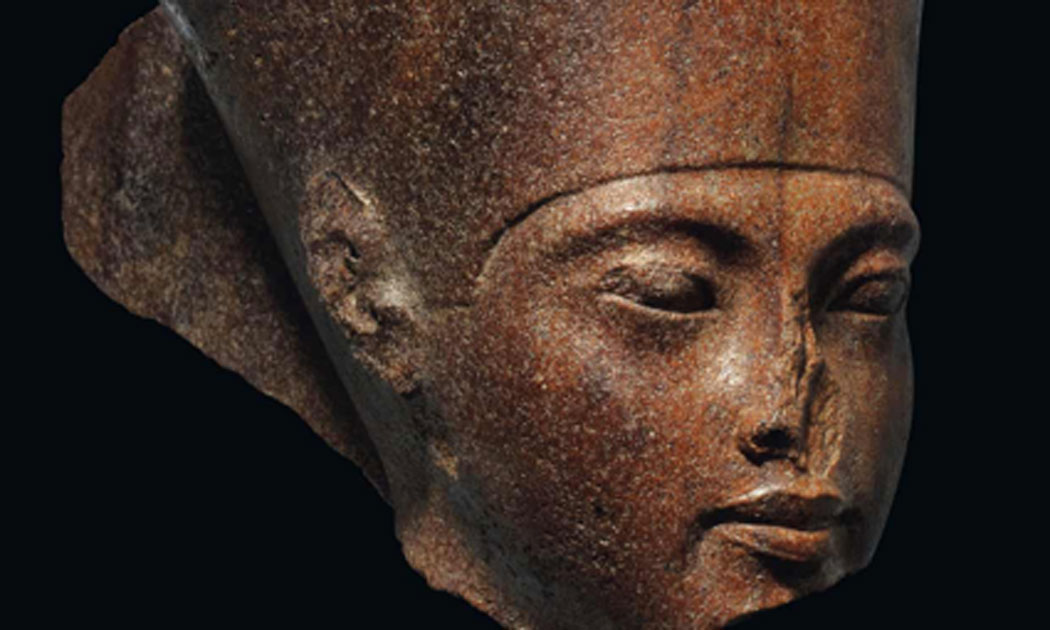3,000-Year-Old Egyptian God Whips Up A Sand Storm Of Legal Battles
On July 4th, Christie’s auction house in London will sell a rare 3,000 years old, , statue of the young pharaoh Tutankhamun’s head, portrayed as the god Amun, which according to Christie’s listing “exudes strength and serenity”. However, according to Egyptian archaeological officials the bust was stolen from the Karnak Temple in Luxor and they accuse Christie’s of having “no ethics at all”.
The King Tut Statue Drama
The controversial brown quartzite, 11.2 inches (28.5 centimeter) high statue, according to a June 10th article in The Guardian, is “expected to raise more than $5.5 (£4) million” at auction, but Egyptian officials demanded that Christie’s prove that the King Tut statue “left the country [Egypt] legally”. Dr. Mostafa Waziri, the head of Egypt’s supreme council for antiquities told reporters at the time “We will talk to the Egyptian foreign ministry and our ambassador in London to do our best to stop it [the auction]”.

Egyptian officials are demanding that Christie’s prove that the King Tut Statue left the Egypt legally. (Christie's)
Egyptian officials suspect the statue was taken from the Karnak Temple Complex, a vast ancient site in the southern city of Luxor in upper Egypt, because similar representations of Amun, styled with Tutankhamun’s facial features, have been recovered there. Furthermore, Dr. Hawass claims the artifact left Egypt illegally in 1970 and that “it should be returned to Egypt”.
- Instruments of Mass Destruction: Do Tutankhamun’s Trumpets Really Summon War?
- Massive Stash of Illegal Artifacts and 1000s of Human Bones Recovered From Indiana Man’s Basement Collection
- 4300-Year-Old Egyptian Tomb Discovered in Saqqara Hold Keys to Secrets of World’s First Alchemists

Karnak Temple Complex, site where the Egyptian officials say the King Tut statue was taken from. (Elias Rovielo / CC BY-SA 2.0)
Christie’s Strike Back
While Dr. Hawass was telling the world that the ancient statue had been stolen and illegally shipped out of Egypt, Christie’s quickly published their defense claiming it had come from “the private Resandro collection” a lot being sold in July that includes Roman era marble heads, a painted wooden Egyptian coffin, and a bronze Egyptian cat statue.

Along with the King Tut statue, Roman marble heads are being auctioned. (Christies)
On Christie’s website they say “The present lot was acquired from Heinz Herzer, a Munich-based dealer in 1985. Prior to this, Joseph Messina, an Austrian dealer, acquired it in 1973-74 from Prinz Wilhelm von Thurn und Taxis, who reputedly had it in his collection by the 1960s.”
And…About Turn
While to most of us this looks like a pretty sound response, Dr. Waziri said: “Christie’s can say whatever they like”. As this dispute raging between Egyptian authorities and Christie's in London, Live Science launched its own investigation into the shady origins of this particular sculpture being auctioned off by an ‘anonymous owner’, which is the ‘dodgy’ bit in all this.
Live Science investigators contacted Viktor von Thurn und Taxis (Wilhelm's son) and Daria von Thurn und Taxis (Wilhelm's niece), who, contrary to Christie’s claims said, “Wilhelm never owned the sculpture” and added, “he had no interest in ancient artifacts, or art in general”. Daria told the investigators she believes it might have been owned by Wilhelm's cousin Prince Raimondo Torre e Tasso, who lived in the castle of Duino [a castle in Italy] famed for its international antiquities. However, a spokesperson for the deceased Prince Raimondo's family said, “his family never owned the sculpture”.
Nope. Everyone Back The Way You Were!
Contrary to all this, Catherine Manson, global head of corporate affairs at Christie’s auctions, told Live Science in an email that during their “extensive provenance research into the sculpture” Daria and Viktor said they “were young at the time and do not precisely recall the head” but equally they do not reject the possibility either. Manson further defended Christie’s in asserting: “We have verified that provenance with all previous owners of the head back to that time, including with Mr. Josef Messina, who confirmed the Head [King Tut statue] was already in the Prinz Wilhelm von Thurn und Taxis Collection in Vienna in the 1960s”.

The origin of the King Tut statue is still in dispute. (Christie's)
The documents collected by the investigators, and pretty much all of the subjective evidence, does indeed suggest that it is ‘unlikely’ that the sculpture was passed down to Wilhelm from his ancestors.
This is certainly the conclusion of Dr. Zahi Hawass, Egypt's former minister of antiquities, who is still convinced it was looted from the Karnak Temple sometime after 1970. He told Live Science “I think for Christie's to put this head on sale, they have no ethics at all” and enraged he said that he “will not let this go,” pledging to take “Christie's and the owner of this head to court”.
Top image: The brown quartzite King Tut statue for auction. Source: Christie's.
By Ashley Cowie


















